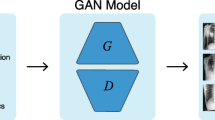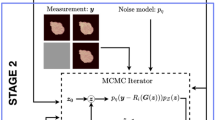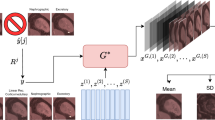Abstract
An immense number of the applications are available that necessitate numerous system input data to bring about the wanted or desired results or system outputs. In this case, in case of any data that is lost or absent it announces a huge amount of favoritism or unfairness in the spectrum of the output produced from within the method. Here, we are presenting one algorithm that aids in creating more precise anatomically credible imageries of high dimensions according to acquired medical brain scans having a large gap between the spacing of two corresponding inner image slices. Even in spite of the fact that vast databases containing anatomical images which store a copious amount of data, anatomical procurement parameters produce a result in the form of scattered scans that tend to lose a large part of the anatomical image. The main ambition of this system is to be able to apply previously developed algorithms that were developed for fine resolution scans used for research purposes, to be applied on poorly sampled images. The algorithm alters the problem of anatomical image imputation to an image to image illustration translation task over multiple domains for the purpose that the generator part and the discriminator part of the network is able to recover the lost data from the remaining pure and unsoiled data accumulation. In this envisioned form of the system in place of producing common and general results, the generator part of the network trains itself to learn to generate a counterfeit sample result that is specifically parameterized along with particular conditions. Our goal is to enable application of existing algorithms that were originally developed for high resolution research scans to significantly under-sampled scans. The models we introduce capture fine-scale anatomical similarity across subjects in clinical image collections and use it to fill in the missing data in scans with large slice spacing with good quality as suitable for medical image-based applications.
Access this chapter
Tax calculation will be finalised at checkout
Purchases are for personal use only
Similar content being viewed by others
References
Han G, Liu X, Han F, Nyoman Tenaya Santika I, Zhao Y, Zhao X, Zhou C (2019) The LISS—a public database of common imaging signs of lung diseases for computer-aided detection and diagnosis research and medical education
Goldman LW (2008) Principles of CT: multislice CT. Department of Radiation Therapy and Medical Physics, Hartford Hospital, Hartford, CT
Luo H, He Y, Jin F, Yang D, Liu X, Ran X, Wang Y (2018) Impact of CT slice thickness on volume and dose evaluation during thoracic cancer radiotherapy. Department of Radiation Oncology, Chongqing University Cancer Hospital & Chongqing Cancer Institute & Chongqing Cancer Hospital, Chongqing, China
Dalca AV, Bouman KL, Freeman WT, Rost NS, Sabuncu MR, Golland P (2018) Medical image imputation from image collections. IEEE
Lee D, Moon W-J, Ye JC (2019) Which contrast does matter? Towards a deep understanding of MR contrast using collaborative GAN. Department of Bio and Brain Engineering, KAIST, Daejeon, Korea Konkuk University Medical Center, Seoul, Korea
Yang W, Zhong L, Chen Y, Lin L, Lu Z, Liu S, Wu Y, Feng Q (2018) Predicting CT image from MRI data through feature matching with learned nonlinear local descriptors. IEEE
Dalca AV, Bouman KL, Freeman WT, Rost NS, Sabuncu MR, Golland P (2017) Population based image imputation. In: Information processing in medical imaging. Springer
Bhatia KK, Rao A, Price AN, Wolz R, Hajnal JV, Rueckert D (2014) Hierarchical manifold learning for regional image analysis. TMI 33(2):444–461
http://statweb.stanford.edu/~tibs/stat315a/LECTURES/em.pdf. Hastie & Tibshirani, 2008
Ribbens A, Hermans J, Maes F, Vandermeulen D, Suetens P (2018) Unsupervised segmentation, clustering and groupwise registration of heterogeneous populations of brain MR images
Paul Segars W, Tsui BMW, Cai J, Yin F-F, Fung GSK, Samei E (2015) Application of the 4D XCAT phantoms in biomedical imaging and beyond
Krause M (2009) Not quite a book review: christiansen’s infinite languages, finite minds as an introduction to connectionist modeling, recursion, and language evolution
Author information
Authors and Affiliations
Corresponding author
Editor information
Editors and Affiliations
Rights and permissions
Copyright information
© 2021 The Author(s), under exclusive license to Springer Nature Singapore Pte Ltd.
About this paper
Cite this paper
Angeline, R., Vani, R. (2021). A Novel Unified Scheme for Missing Image Data Suggestion Based on Collaborative Generative Adversarial Network. In: Sharma, H., Saraswat, M., Kumar, S., Bansal, J.C. (eds) Intelligent Learning for Computer Vision. CIS 2020. Lecture Notes on Data Engineering and Communications Technologies, vol 61. Springer, Singapore. https://doi.org/10.1007/978-981-33-4582-9_36
Download citation
DOI: https://doi.org/10.1007/978-981-33-4582-9_36
Published:
Publisher Name: Springer, Singapore
Print ISBN: 978-981-33-4581-2
Online ISBN: 978-981-33-4582-9
eBook Packages: Intelligent Technologies and RoboticsIntelligent Technologies and Robotics (R0)




